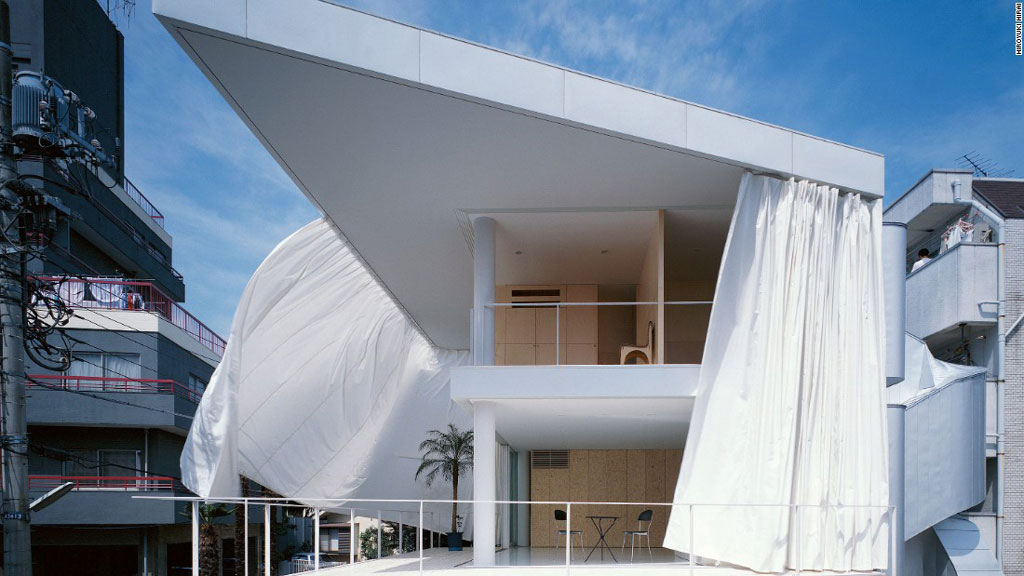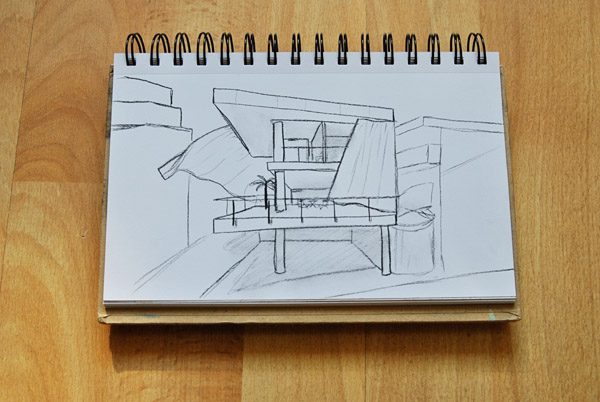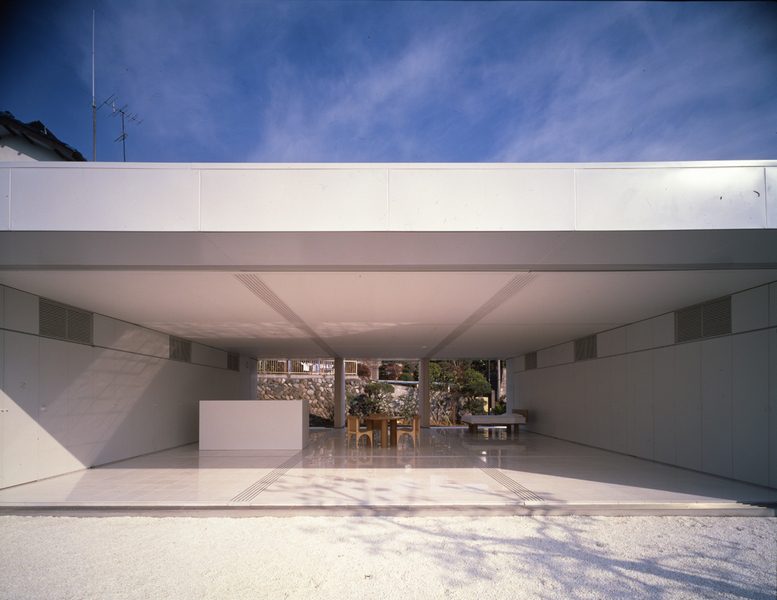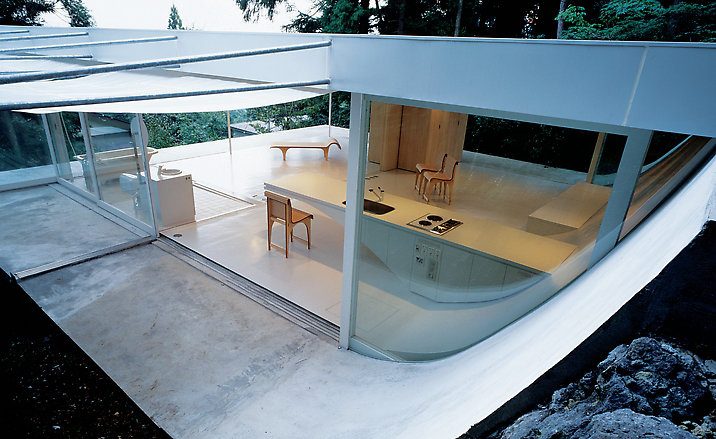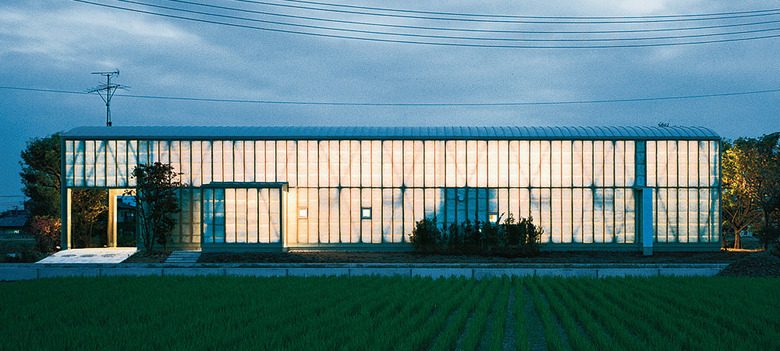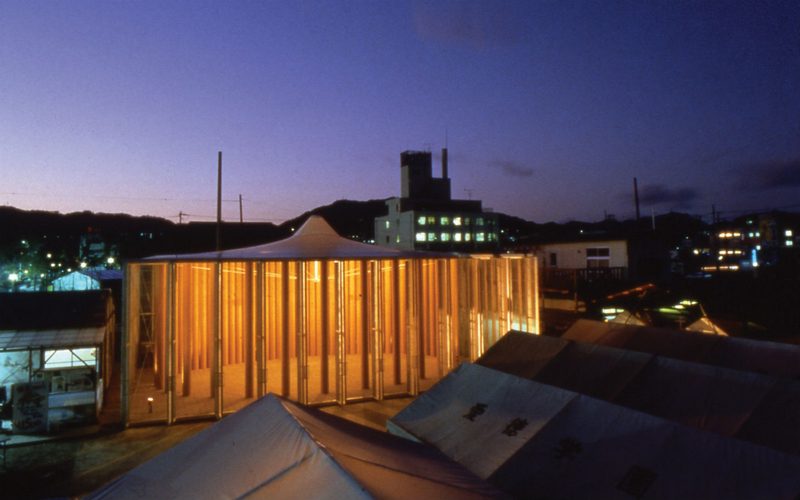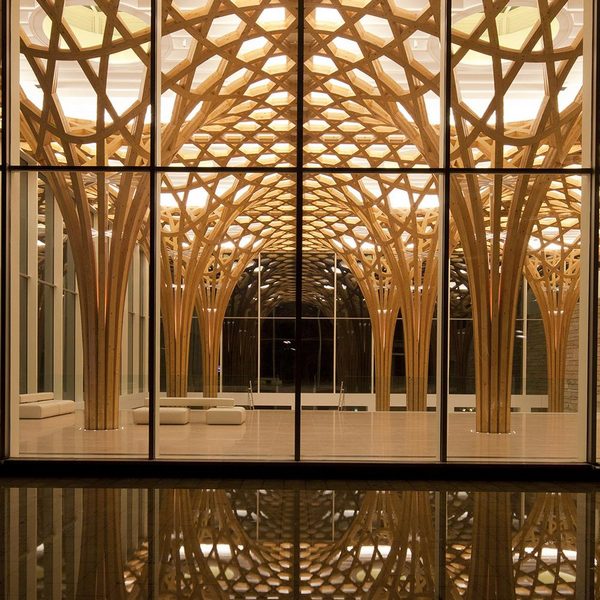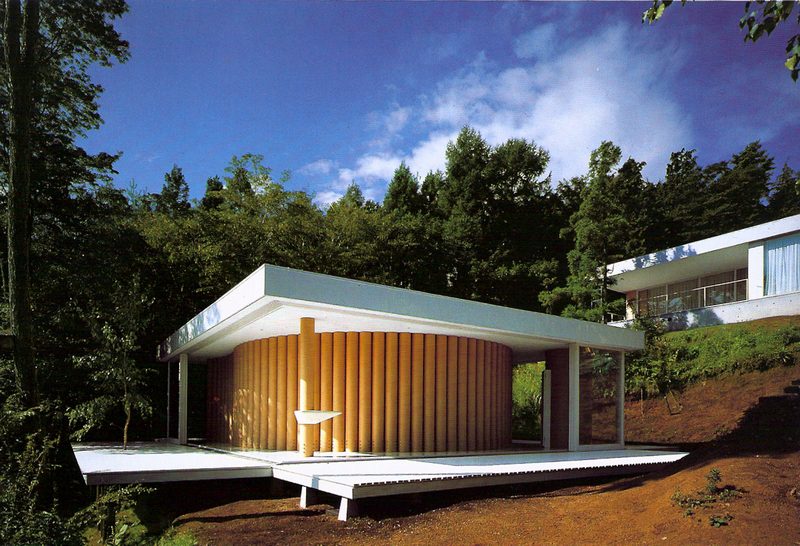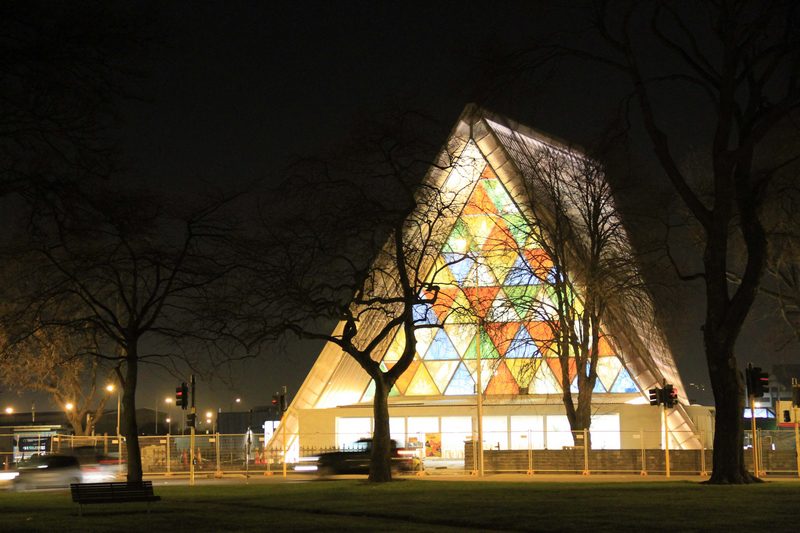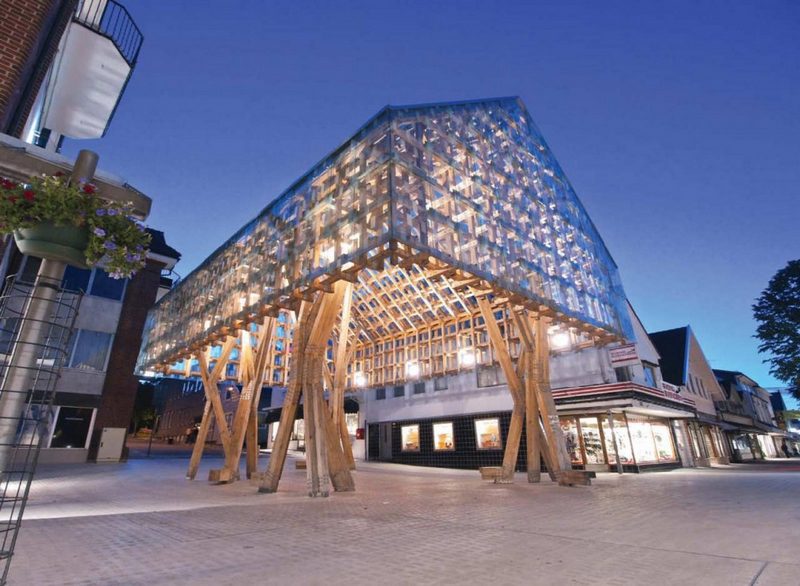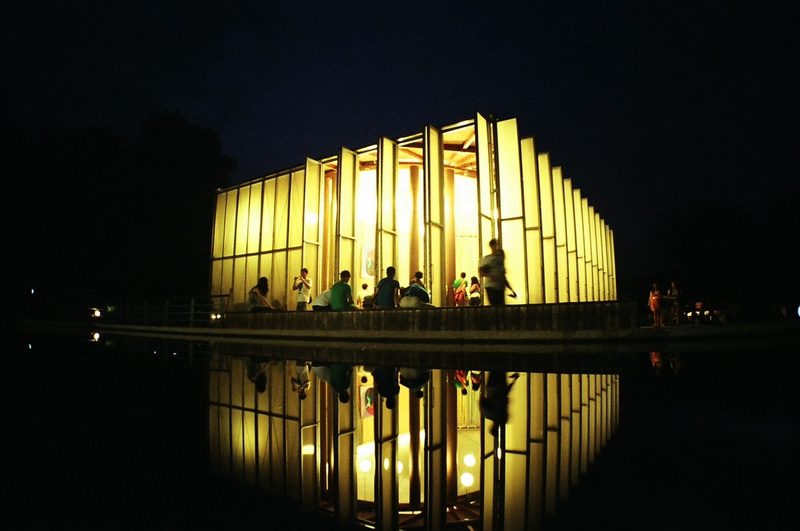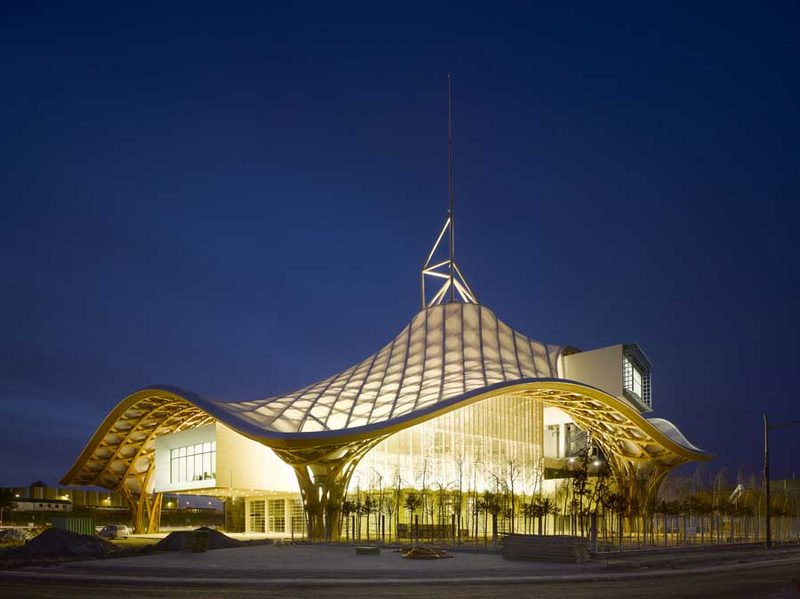ARCHITECTURE: Shigeru Ban
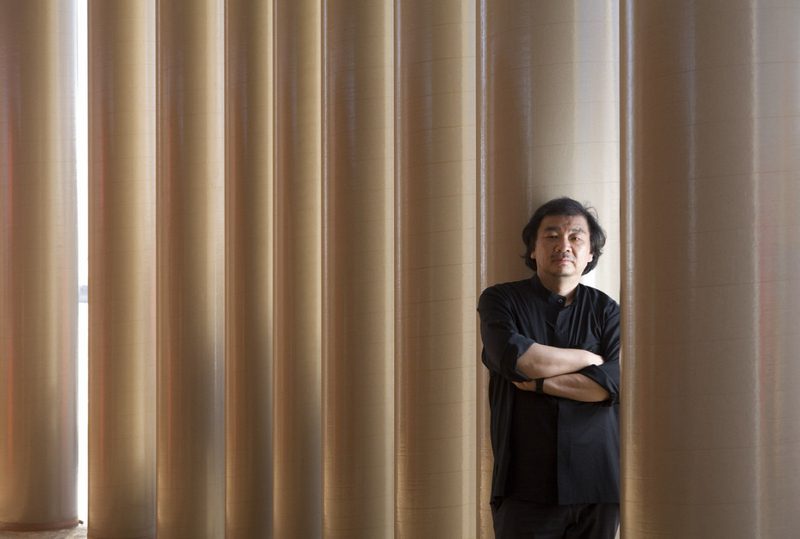 Shigeru Ban is a Japanese architect born in Tokyo (5/8/1957- ), known for his innovative work with paper, particularly recycled cardboard tubes used to quickly and efficiently house disaster victims. Ban’s experimental development of paper tubing structures came in 1986, before any of his programmatic commissions. He found paper’s structural integrity to be much better than expected and noted that it is also available all around the world. The structures are most commonly available from manufacturers providing paper tubes for use in textile factories, as in the case with the disaster relief shelters project in Ahmedabad, India. As a result of this, Ban’s DIY refugee shelters (used in Japan after the Kobe earthquake, in Turkey, Rwanda and around the world) are very popular and effective for low-cost disaster relief-housing. Paper tubing also proved advantageous for building emergency shelters during the Rwanda refugee crisis in 1994, where the use of trees for framing was creating deforestation problems, and alternative construction materials were difficult to find. In 1994, the magnitude Great Hanshin earthquake devastated Kobe, Japan, which offered a reconstruction project to Ban. He studied at the Tokyo University of the Arts, and then at the Southern California Institute of Architecture. Later he went to Cooper Union’s School of Architecture, where he studied under John Hejduk and graduated in 1984. From Hejduk (who was a part of the New York Five), Ban not only learned fundamental elements of architecture, but also gained an interest in “architectonic poetics” or the creation of “three-dimensional poetry”. Reviewed the concept of Modernism, compared with the traditional architecture, incorporating an ultra-modern side, with the help of methodology and know-how acquired in the West. The architectural work of Shigeru Ban, balance between East and West and this is evident from the Curtain house (1995) in Tokyo and the Cathedral in Kobe until the Centre Pompidou-Metz in Metz, France (2014). For all the above, but mostly for all of his work, he awarded with the Pritzkel Prize 2014.-Efi Michalarou
Shigeru Ban is a Japanese architect born in Tokyo (5/8/1957- ), known for his innovative work with paper, particularly recycled cardboard tubes used to quickly and efficiently house disaster victims. Ban’s experimental development of paper tubing structures came in 1986, before any of his programmatic commissions. He found paper’s structural integrity to be much better than expected and noted that it is also available all around the world. The structures are most commonly available from manufacturers providing paper tubes for use in textile factories, as in the case with the disaster relief shelters project in Ahmedabad, India. As a result of this, Ban’s DIY refugee shelters (used in Japan after the Kobe earthquake, in Turkey, Rwanda and around the world) are very popular and effective for low-cost disaster relief-housing. Paper tubing also proved advantageous for building emergency shelters during the Rwanda refugee crisis in 1994, where the use of trees for framing was creating deforestation problems, and alternative construction materials were difficult to find. In 1994, the magnitude Great Hanshin earthquake devastated Kobe, Japan, which offered a reconstruction project to Ban. He studied at the Tokyo University of the Arts, and then at the Southern California Institute of Architecture. Later he went to Cooper Union’s School of Architecture, where he studied under John Hejduk and graduated in 1984. From Hejduk (who was a part of the New York Five), Ban not only learned fundamental elements of architecture, but also gained an interest in “architectonic poetics” or the creation of “three-dimensional poetry”. Reviewed the concept of Modernism, compared with the traditional architecture, incorporating an ultra-modern side, with the help of methodology and know-how acquired in the West. The architectural work of Shigeru Ban, balance between East and West and this is evident from the Curtain house (1995) in Tokyo and the Cathedral in Kobe until the Centre Pompidou-Metz in Metz, France (2014). For all the above, but mostly for all of his work, he awarded with the Pritzkel Prize 2014.-Efi Michalarou

